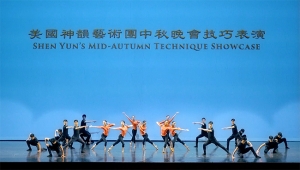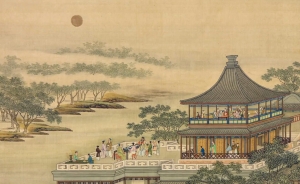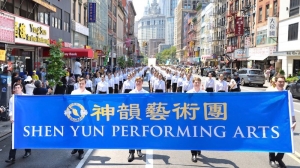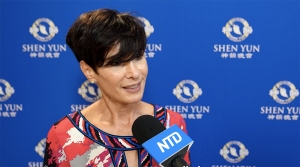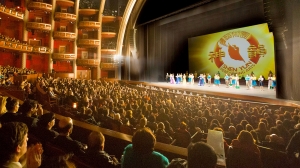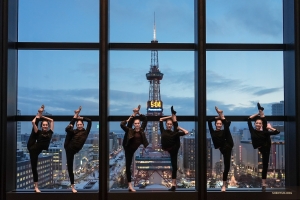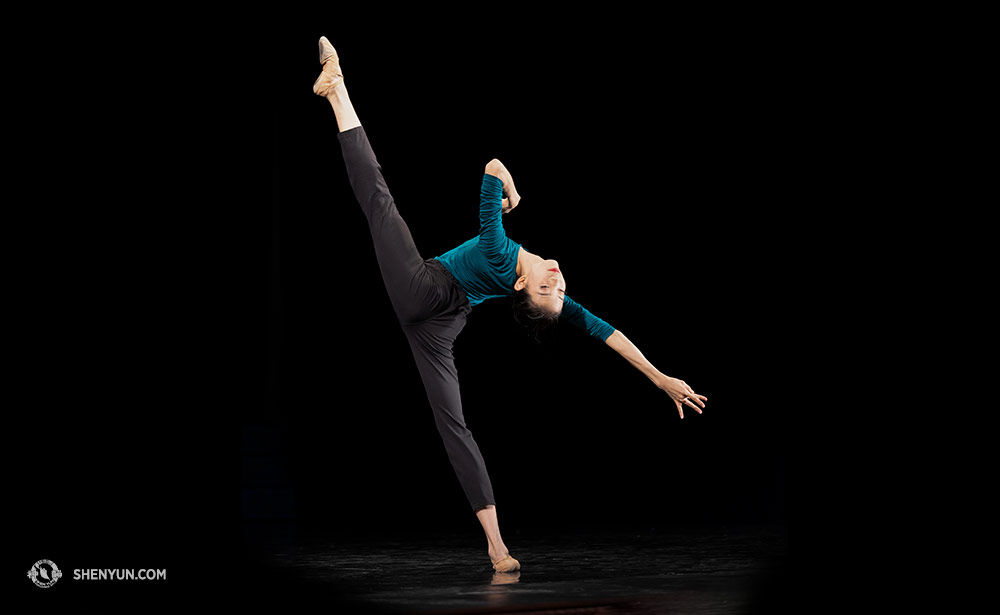
A New Level of Control
Principal Dancer Luna Yu shares tips for classical Chinese dance control techniques
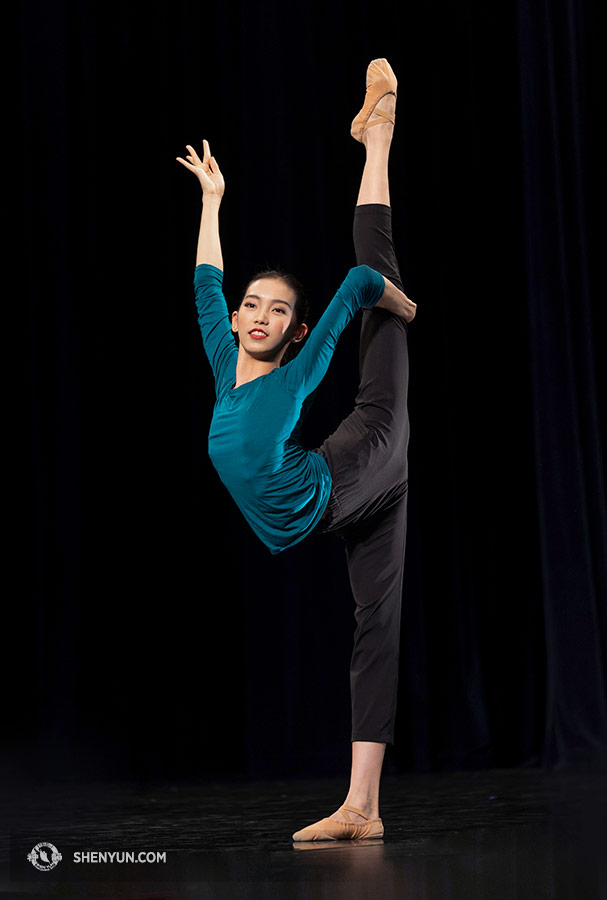
A month into the rehearsal season, the new program is coming together bit by bit. At the same time, our dancers—now back at Shen Yun headquarters with the spacious studios, barres, and mirrors that they missed so much during tour—are working passionately to refine their technique, explore untried moves, and reach new heights in classical Chinese dance.
Between rehearsals, everyone is focusing on getting the most out of daily training and exploring new possibilities for improvement, whether it’s practicing a certain technique 50 times a day or putting in extra stretching to get those leg extensions as beautiful as can be.
In classical Chinese dance, extensions fall under the control, or kong-zhi (控制), category. Kong-zhi encompasses a wide range of techniques and poses that require flexibility, strength, and, of course, impeccable control. It’s an essential part of classical Chinese dance, especially for female dancers. And though the new Shen Yun program is still coming together, know that there will not be a lack of kong-zhi movements throughout the show.
So what does it take to lift one’s leg as easily as an arm? How do you remain perfectly balanced and composed? Here are some tried and tested tips from Principal Dancer Luna Yu.
Flexibility
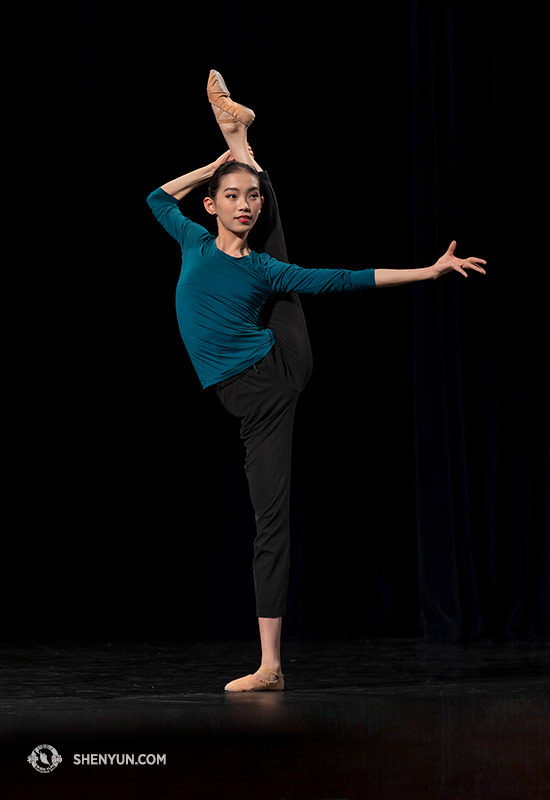
To lift your leg to 180 degrees, you must have adequate range of motion. Classical Chinese dancers are always working to increase their flexibility—each and every day, and in almost every direction possible. Luna Yu has been dancing since the age of six, and she still keeps up a rigorous daily routine. Her favorite method is partner stretching.
“I like to stretch whenever I have a bit of free time, because if you want to become more flexible you really have to put in the effort,” Luna Yu says. “Even if you don’t see immediate progress, keep at it because every little bit will add up. Perseverance and diligence definitely pay off.”
Everyone knows to work on their problem areas, but remember to still stretch yourself out everywhere since the entire body is connected. The best reward is feeling your joints unlocking and tendons extending—it’s like gaining freedom!
Strength
Though flexibility is a must, it alone cannot suffice. Kong-zhi movements require considerable strength to complete. Your core, hips, legs, knees, ankles, feet—no part of the body can slack off. Be conscious of what your muscles are doing during training, so you will develop the right strength and be able to display your hard-earned flexibility to the fullest.
Yu practices leg holds every day. “Leg holds are great for conditioning, because they help both flexibility and strength,” she says. “Strength is also something that grows little by little. So once again, it’s up to your willpower.”
Method

Grasp the rules and methods. Figure out which muscles to employ and when, how to coordinate your movements, how to get into the best alignment, and how to achieve the best looking poses. Pay close attention to your instructors and figure out all the how-to’s both mentally and physically. And never stop pumping your brain during rehearsals or when you’re practicing yourself, either. Many times it’s not that you’re physically unable to complete a movement or technique; more likely, you just haven’t grasped the correct method. So always practice with your noggin on!
“Even when I repeat the same movements or routines each day, I’m constantly thinking about how I can do them better,” she says. “For example, which muscles should I call on to help me more, how to improve my balance, increase my speed, or anything else. If you’re always trying to figure out how you can improve, in time, everything will click into place.”
Stability
With flexibility, strength, and method come physical stability. But sometimes the mind is harder to tame than the body. To be in full control, one must also be able to kong-zhi the mind. Through practice, you’ll have the skills and physical ability, but what if nerves attack under the spotlight? Before you begin, eliminate all distracting or negative thoughts. Imagine that your mind is just like toes you must point or a knee you must straighten, it’s yours to direct.
“When the pressure builds, I tell myself to keep my heart calm, though it’s not always so easy,” says Yu. “Sometimes I remind myself of the techniques’ requirements as I’m doing them. But I mainly focus on the dance. When I completely immerse myself in the performance, just totally enjoy the performance, there’s no room in my head for anything else.”
Soul
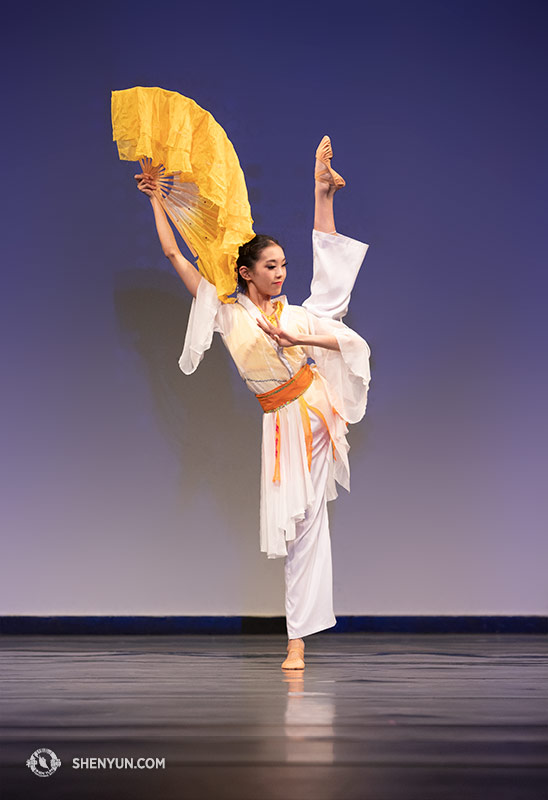
Classical Chinese dance is a holistic art form, and it’s never enough to just jab your leg up high. You must express the feeling behind the dancing. Try to have every movement, however technical, emanate from your heart.
What Yu loves most about classical Chinese dance is its ability to express beauty and meaning on such a deep level. “When I’m dancing, it feels wonderful to embody the softness, the delicate and very refined elegance that is part of classical Chinese dance,” she says.
“The shen-yun and yun-wei components (expression of inner beauty and feeling; style and charm) are what I enjoy the most,” she says. “No matter what difficult technique you may be doing, you have to keep it within the dance, within the feeling.”
Amidst of hours and hours of new rehearsals, she is still keeping diligent at her self-practice routines. And as you’ll see on stage, perseverance really pays off.
“If you want to improve your extensions, you have to focus on your goals. Be diligent and never give up,” Yu says. “I guess it’s the same for anything in life, too. Inch by inch—that’s how we achieve the remarkable. ‘Grain of rice by grain of rice’ is how one of our senior instructors used to put it—though it sounds more profound in Chinese!”
“Each season, we try to push the artistry to a new level. Everyone’s really keen to give the audience the absolute best,” she says. “And I’m super excited for what new challenges the next performance tour will bring.”


